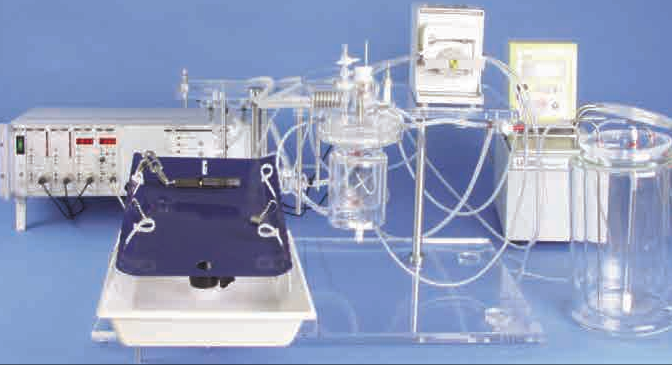Overview of Isolated Lung Perfusion Systems
The Isolated Perfused Lung (IPL) method for ex vivo lung perfusion (EVLP) is an invaluable method for characterizing thenon-respiratory capabilities of pulmonary tissues such as pulmonary metabolic activity as well as the activities of variouscomponents (pulmonary alveolar macrophage, alveolar tissue, endothelial tissue, etc.) in response to inhaled/airborneparticulates or therapies (drug testing, toxicology testing, etc.). Isolated lung systems are equally useful for evaluatingrespiratory functions such as respiratory mechanics and gas exchange. The lungs, even though removed from the body,are still an intact functional organ. Unlike other in vitro methods such as tissue slices and cultures, they can continuetheir physiological function, now without interference from the CNS and other systems of the living organism.
The IPL series of modular Isolated Lung Perfusion Systems represents a full line of in-depth respiratory mechanics and pulmonary physiology systems tailored for specific species from mouse to pig.

Technology Designed for the Unique Requirements of the Isolated Perfused Lung
The HSE system architecture utilizes a unique technology to enable seamless switching between positive and negative pressure ventilation on all models from Mouse to Rabbit/Fetal Pig. Negative pressure ventilation is the natural method of breathing for the lung and has been demonstrated to allow a much increased pulmonary artery flow and decreased edema formation in comparison to positive pressure ventilation. Combined with constant pressure perfusion, optimal physiologic lung function can be more easily achieved.
Systems begin at basic perfusion and ventilation. With the addition of measurement devices, signal conditioning equipment, and data acquisition software will provide a superior solution for virtually any study. Building your system is as simple as selecting the basic system for your lung model and then adding various options to suit the particular needs of your study.
The IPL preparation requires both the perfusion of the vascular system as well as the ventilation of the respiratory tract. Like all HSE perfusion systems, the IPL series utilizes a Solid State Physiological Perfusion Circuit technology, defined by the use of a solid block of material (Perspex) with precision-milled perfusion and ventilation pathways. The technology is integrated into a common architecture, appropriately scaled for species, ensuring precisely repeatable non-turbulent perfusion an dventilation for the highest fidelity pressure and flow measurements. This, combined with the natural thermal properties of Perspex, creates a system that allows control, maintenance and monitoring of pulmonary parameters in a way that is more physiologically relevant than any conventional perfusion system.
